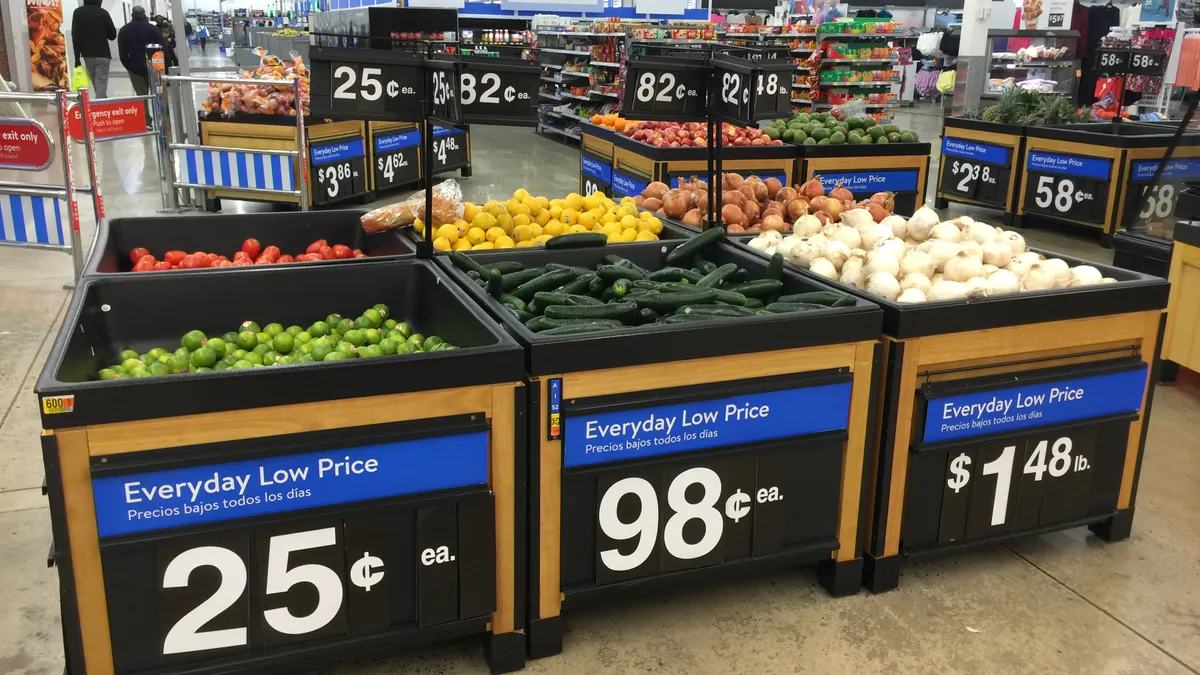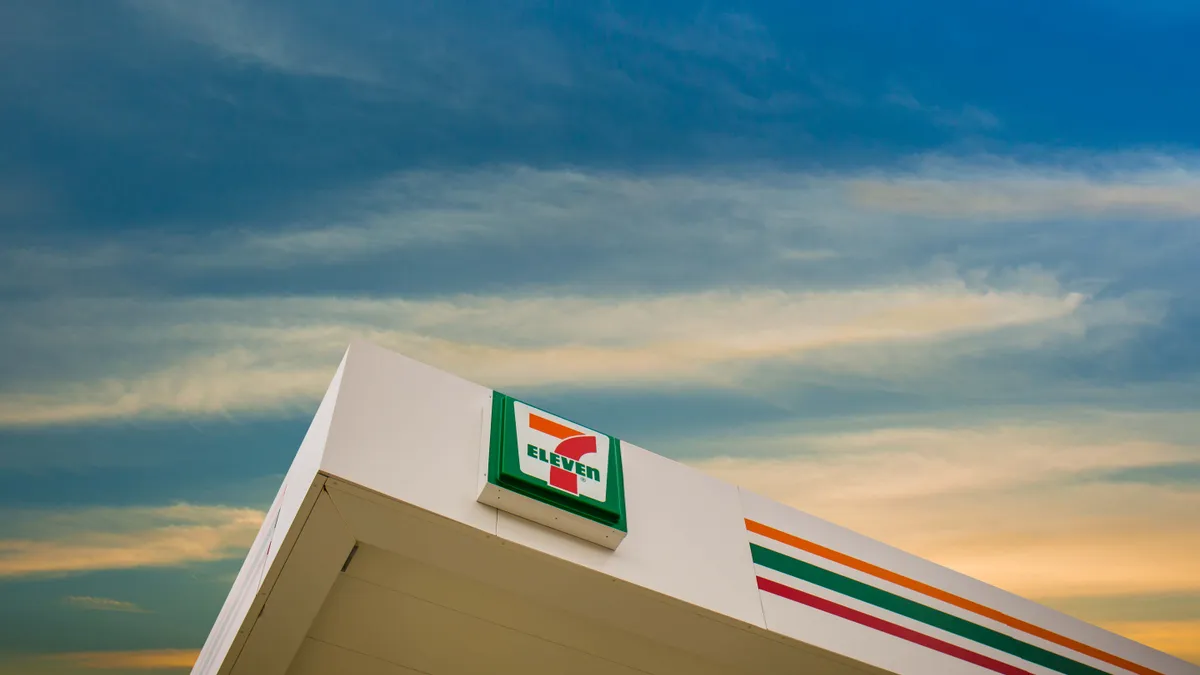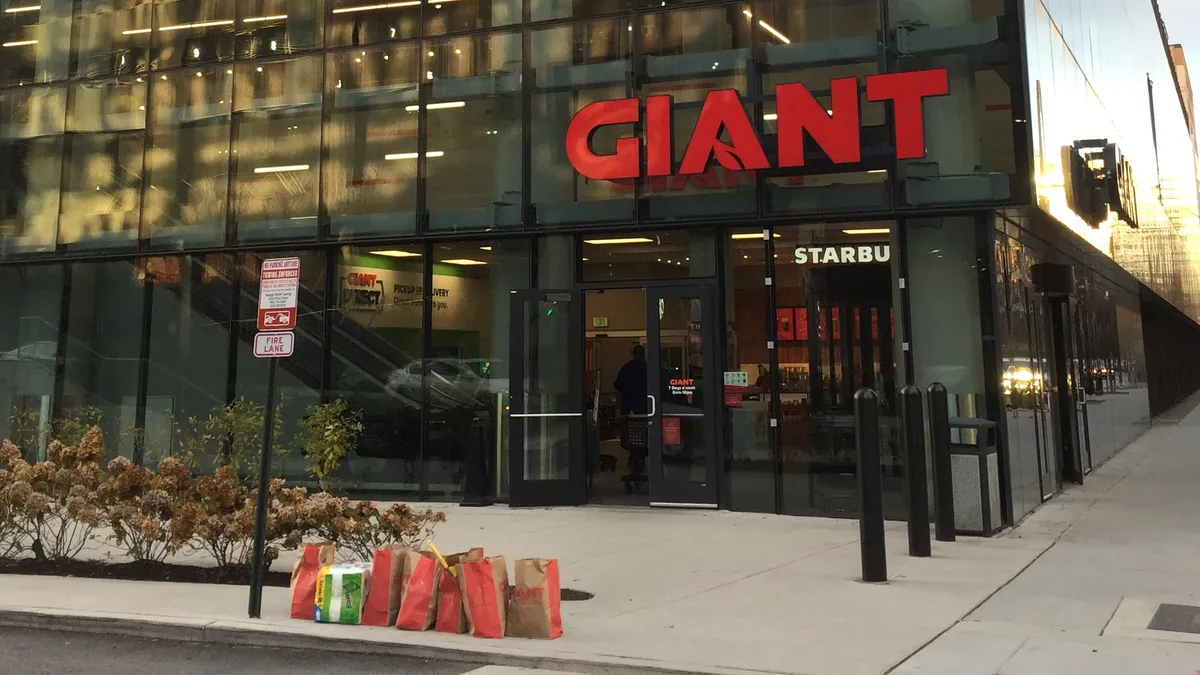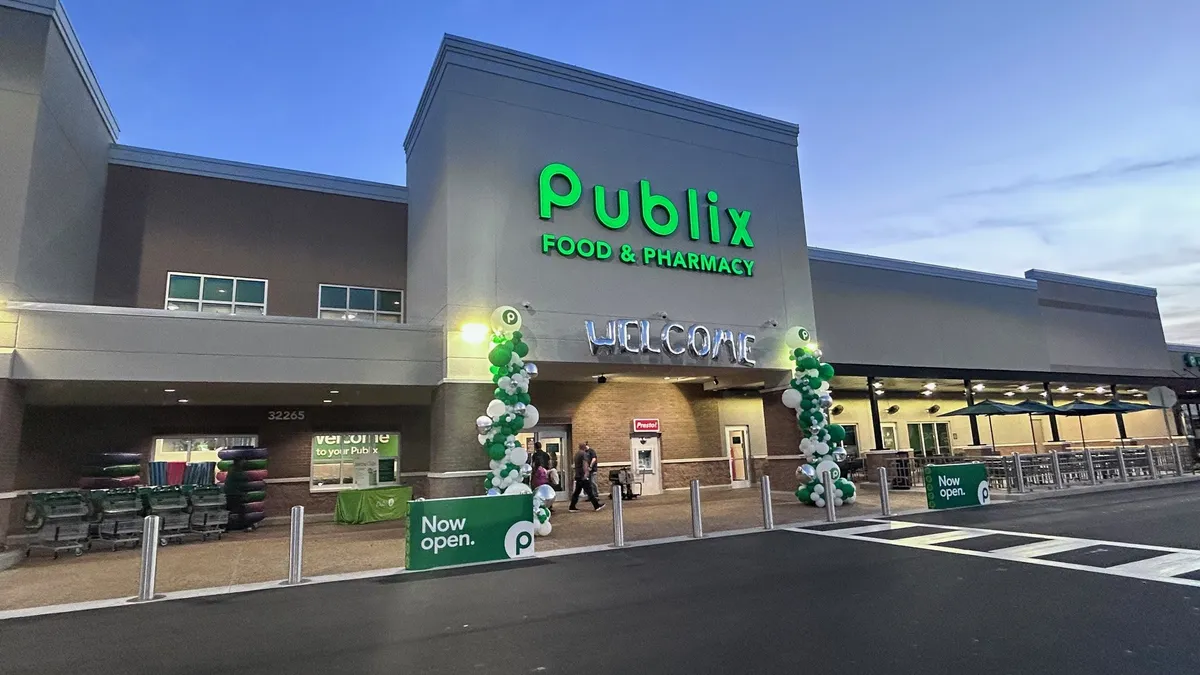The Friday Checkout is a weekly column providing more insight on the news, rounding up the announcements you may have missed and sharing what’s to come.
Walmart and Target posted vastly different third-quarter results this week even as they both reported growth in their grocery categories.
Walmart exceeded Wall Street expectations with a 5.3% increase in U.S. comparable-store sales excluding fuel during the quarter compared to the same time last year, noting that its grocery segment saw mid-single-digit growth and food units hit their highest level in four years.
Meanwhile, Target missed expectations, posting a slight overall comparable sales increase of 0.3% with a physical store sales decline of 1.9%, offsetting the 10.8% increase in digital sales. Target said its food and beverage category grew in the low single digits compared to the prior year.
Both retailers this year have ramped up their grocery offerings in various ways, such as private brand launches, and food is clearly a growth category for them. But their Q3 results underscore the different ways each retailer positions itself and the strategic roles that groceries play for them.
At Walmart stores, groceries have for years been a core part of the grocery shopping experience. At many locations, the produce department is the first thing consumers see when they walk in the doors. Target, on the other hand, often positions its grocery selection along the perimeter of stores. Getting there requires walking past aisles of personal care products, apparel and other nonfood items.
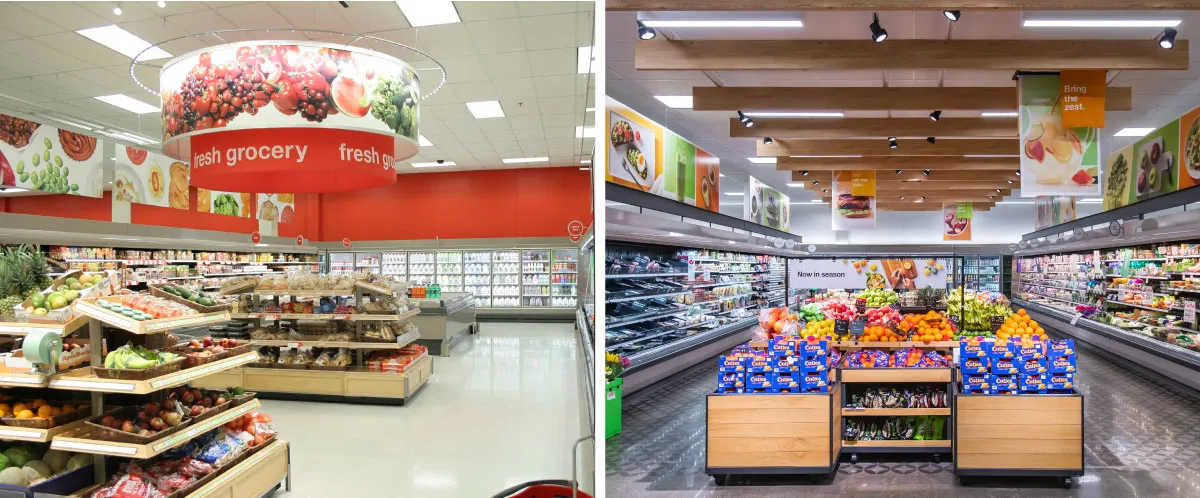
Put another way: Walmart shoppers often go for groceries and end up adding nonfood items, while Target shoppers typically make the trip for nonfood items and end up adding groceries. This highlights a key disparity between need-based shopping and discretionary shopping at a time when shoppers are intensely focused on value.
“Consumers are still spending, but they’re focused more on essentials and have become far pickier about discretionary products and have cut back on the number of impulse purchases,” Neil Saunders, managing director of GlobalData, told sister site Retail Dive. “All these things undermine the Target model which partly relies on a robust consumer who is comfortable loading their cart with things that they want, but do not absolutely need.”
Walmart has continued to stress in earnings calls that it’s leaning into an omnichannel shopping experience focused on convenience and low prices — a strategy that is resonating across income cohorts. The retailer attracted higher-income consumers amid high inflation and is managing to keep them; households that earn more than $100,000 accounted for 75% of Walmart’s share gains in the U.S. during Q3. Walmart could also be a threat to discounters as it continues to attract low-income consumers, The Wall Street Journal reported.
In case you missed it
Colorado mayor supports Kroger-Albertsons merger
Residents in the Colorado city of Aurora stand to benefit if Kroger and Albertsons merge because the deal would likely ensure that five local supermarkets slated for divestiture would remain in operation, according to the city’s mayor.
Albertsons, which owns Safeway, has “made clear” that if the merger fails, it would probably have to close stores, which “would create a ripple effect, potentially leaving our neighborhoods underserved and even creating food deserts in certain parts of the city,” Aurora Mayor Mike Coffman wrote in a Nov. 15 Colorado Politics opinion piece.
The mayor added that he also supports the merger because of Kroger’s pledge to invest millions of dollars into lowering grocery prices in Colorado.
Walmart’s grocery dominance continues
The retailer commanded the largest share of U.S. grocery sales during the year that ended Sept. 30 by a large margin, data analysis firm Numerator reported on Wednesday.
Walmart claimed 21.2% of the U.S. grocery market across all sectors except alcohol during the period, down year over year by half a percentage point. Kroger accounted for 9.3% of the market, while Costco took home an 8.5% share.
Turkey Day gets more expensive
The typical basket of Thanksgiving foods will cost 2% more this year than in 2023 — and those goods will carry a tab that is 26% higher than it was in 2020, according to Circana data released Tuesday by 210 Analytics.
Thanksgiving is second only to Christmas in terms of the sales boost it provides to grocers, 210 Analytics noted, adding that almost 80% of the average Thanksgiving meal is homemade. A third of shoppers anticipate paying more for groceries this year but are unlikely to cut back on purchases, the data analysis firm said.
Impulse find
Wild hog shows up at Florida supermarket
Shoppers at a Publix in Flagler Beach, Florida, recently encountered a different kind of food source. A lone wild hog walked into the store’s parking lot one evening last week, capturing the attention of one visitor to the store, Guy Oshri, who initially thought the animal was a dog, local TV station Fox 35 reported. “Oh, he’s just a nice animal grazing around, trying to get something to eat just like all of us,” Oshri joked, according to the news outlet, adding that no one else seemed to be paying attention.
Wild hogs are popular among hunters and show up in all 67 Florida counties, according to the Florida Fish and Wildlife Conservation Commission. They can weigh over 150 pounds, be up to six feet long and can leave an area “looking like a plowed field” after they eat, the commission notes.


